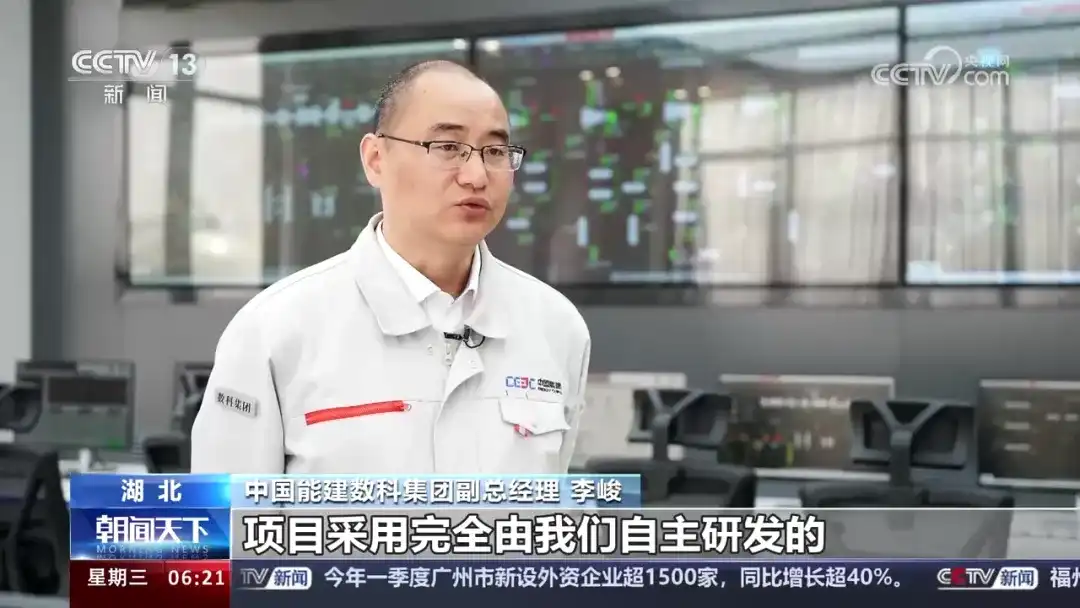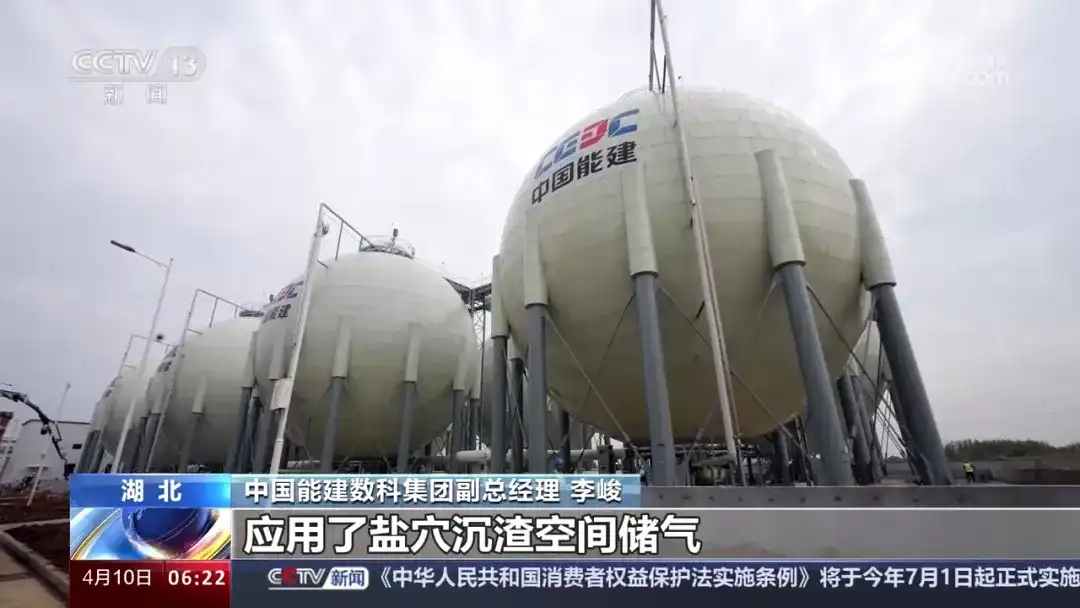The 300-megawatt compressed gas energy storage power station is connected to the grid to generate electricity, writing a new chapter in new energy storage

On April 9, China was able to build the world's first (set) 300-megawatt compressed gas energy storage power station integrated with "research, investment, construction and operation"-the Hubei Yingcheng compressed gas energy storage power station demonstration project was successfully connected to the grid.
On the same day, CCTV's "News Network" reported, today's "Morning News Tianxia" conducted in-depth interpretation, and central media such as People's Daily and Xinhua Agency simultaneously carried out key reports.
The world's first (set) 300 MW compressed gas energy storage power station grid-connected power generation
The reporter learned from China Energy Construction yesterday that the world's first 300-megawatt compressed gas energy storage power station-Hubei Yingcheng compressed gas energy storage power station demonstration project was successfully connected to the grid at one time, creating a number of single-machine power, energy storage scale, conversion efficiency, etc. World records.
Hubei Yingcheng Compression Gas Energy Storage Power Station Demonstration Project is a new type of energy storage power station and is known as the "Power System Charging Treasure". The demonstration project uses the world's first 300-megawatt compressed gas energy storage system, with an annual gas storage capacity of 1.9 billion standard cubic meters and an annual power generation capacity of about 500 million kilowatt-hours.

Li Jun, Deputy General Manager of China Energy Construction Digital Group: The project adopts a large-scale compressed gas energy storage system solution completely independently developed by us. The single machine power reaches 300 megawatts, the energy storage capacity reaches 1500 megawatts, and the conversion efficiency is close to 70%. The electricity stored at one time can meet the needs of a small and medium-sized city uses electricity continuously for 5 hours.
A compressed air energy storage power station, also known as a compressed air energy storage power station, is a new type of electric energy that uses the surplus electricity during periods of low load on the grid to compress air, stores it underground, and then releases it during peak power consumption, and generates electricity through generator sets. Storage system. Compressed air energy storage system is currently one of the most mature physical energy storage technologies except pumped energy, and it is also a hot spot in the research and development of large-scale energy storage technologies today.

Li Jun, Deputy General Manager of China Energy Construction Digital Group:After joint technical research, we have successfully applied salt cave sediment space gas storage for the first time in the world, and pioneered the domestic largest-diameter (339.7 mm) injection and production well plan, which has greatly improved the utilization rate of salt cave cavities and the injection and production wells. The amount of gas, also reduces project costs and shortens the construction period.
After the Yingcheng compressed gas storage power station is connected to the grid, it can effectively improve the peak shaving capacity of the regional power grid, and at the same time it can also promote the power grid to consume more new energy sources such as wind power and photovoltaics. In the next step, the power station operating mechanism will be refined to create possibilities for large-scale commercial application of new energy storage technologies.
Abandoned salt mines transformed into "charging treasure"
The reporter learned that the Yingcheng compressed gas energy storage power station uses abandoned salt mines as gas storage, which is a typical salt cave type compressed gas energy storage. In recent years, Jiangsu, Shandong and other places have explored salt cave compressed gas storage technology. Let's take a look at the highlights of this new energy storage technology.
Salt caves are cavities formed after the underground salt layer is mined. They are not only well airtight, but also highly stable. They are ideal places to store high-pressure air. They have many advantages such as long service life, low cost, small land occupation, safety and environmental protection. Compared with the method of building pressure vessels such as steel tanks for storage, using underground caves such as salt caves to build large-capacity power stations will significantly reduce the cost of raw materials, land, etc.

Wu Yun, Executive Vice Chairman of China New Energy Storage Industry Innovation Alliance and Deputy General Manager of China Energy Construction: At present, including Jiuquan in Gansu, Chaoyang in Liaoning, and Tai 'an in Shandong, more than 50 compressed gas energy storage projects have conditions for implementation and are under construction in China Energy Construction. At the same time, we have launched research and development of key core technologies such as a single unit capacity of 600 MW to 1000 MW and a conversion efficiency of 72% to 75%.
According to reports, China's salt cave resources are widely distributed, with more than 2,000 meeting the conditions for use. They are currently mainly used to store natural gas and oil. If relevant resources are revitalized, a salt cave energy storage capacity with an installed capacity of 10 million kilowatts can be achieved, which is equivalent to the electricity load of a megacity, and will effectively promote the construction of China's new power system.
China's new energy storage development enters the fast lane
In recent years, with the transformation of China's energy structure, the proportion of renewable energy in the energy system has gradually increased. Renewable energy sources such as solar energy and wind energy are intermittent and uncertain, putting forward higher requirements for accelerating energy storage construction. This year's "Government Work Report" included the development of "new energy storage" in it for the first time, and the development of "new energy storage" pressed the "acceleration button".
Energy storage functions like a "charging treasure". It can store the surplus power generation of new energy such as wind power and photovoltaics and discharge it during peak electricity consumption. Energy storage is divided into traditional energy storage and new energy storage. The main representative of traditional energy storage is pumped storage power stations. New energy storage is new energy storage technologies other than pumped storage, including new lithium-ion batteries, flow batteries, compressed air energy storage, etc.
Since 2023, new energy storage technologies have blossomed in bloom. Construction of a 300-megawatt compressed air energy storage project, a 100-megawatt liquid flow battery energy storage project, and a megawatt flywheel energy storage project has started. Gravity energy storage, liquid air energy storage and other new technologies are also being implemented.

Data from the National Energy Administration shows that as of the end of 2023, the cumulative installed capacity of new energy storage projects completed and put into operation across the country has reached 31.39 million kilowatts. In 2023, the new installed capacity of new energy storage will increase by more than 260% compared with the end of 2022. In the future, China's new energy storage will show a development direction that goes hand in hand with industrial scale, lean technology, and systematic mechanisms.
responsible editor: Qingyun
-**
